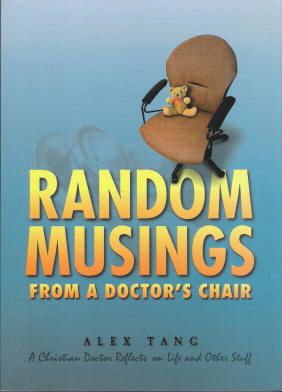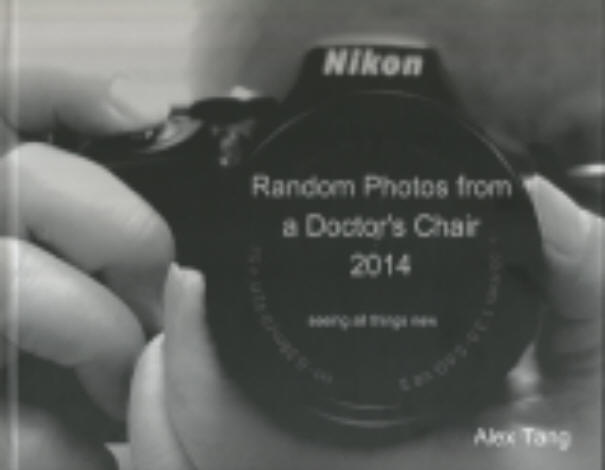How (not) to think like a doctor
This is an excellent post by Ilana Yurkiewicz who is a first year medical student at Harvard Medical School which was originally posted on her blog Unofficial Prognosis which is a blog with The Scientific American website. Posted in full here with her permission.
How (not) to think like a doctor

On our first day of physiology, our professor showed us a picture of an elephant. He let us look at it for several seconds and then asked: what is this? On the next slide, he put up a chest X-ray. We stared for a few more seconds and were then asked: what’s the diagnosis?
He was demonstrating what was done in a recent experiment that examined the way doctors think. In the study, similar images were shown for similarly brief amounts of time, but to physicians rather than first-year medical students. It took doctors the same amount of time to recognize an animal as to make a diagnosis – under 1.5 seconds. Moreover, brain scans revealed that the same parts of the brain were being used to do both tasks.
This was not the first time in medical school I was made acutely aware of how I think.
What are the ways a person could identify an elephant? One method is working from the top-down. You could observe: this is large, grey, and has four legs and a trunk. Then you would come up with possible objects that possess those qualities, exclude ones that do not make sense, and continue to collect and reason through data until you arrive at the correct diagnosis.
Or, you could reflexively recognize the pattern and make the identification.
For something like an elephant, which approach we take is obvious. We call upon pattern recognition all the time, without even consciously noticing that we’re solving a problem. It can be extremely beneficial.
Imagine if you had to derive an elephant from the top-down every time you saw one. Moreover, imagine you saw twenty elephants a day. You wouldn’t have the time to reason through your assortment of observations in each case. The ability to perceive patterns and instinctively classify them based on things we’ve seen before supplies us with the tools to derive those things we have not.
As a result, it makes sense that medicine would rely on this mode of thinking. Medicine is huge in scope. It is cumulative. Many doctors are taught the top-down approach – meaning take a few facts, and formulate a diagnosis. Receive a few pieces of the puzzle, and extrapolate the whole picture.
Entering medicine means learning a new language, and you won’t be able to solve complex problems if you are looking up every other word and puzzling through every concept in the question. There are undoubtedly disease patterns you should know, cold.
But there are downsides. Jump to conclusions based on only a few facts, and your ideas are prone to biases. There is the bias associated with arbitrary prior experience; you might be more likely to make a diagnosis of one illness, for instance, simply because you happened to see it before. You might try to massage your observations into preconceived models in which they do not belong. Or, you might discard stubborn data completely, assuming them flawed.
Maybe most of the time, your prediction based on pattern recognition will be correct. But you will be wrong about the complicated cases. And being wrong in medicine can have serious consequences.
Our professor’s point in showing us the elephant experiment was not to encourage us to think like the doctors in the study. Rather, the point was to show what we might be prone to do – and thereby to encourage us to resist those impulses. Do not guess, we were advised. Do not just memorize patterns. Work through each problem, and fill in each step.
Following these recommendations will be an uphill battle. Problem-solving takes time – something that is relentlessly lacking from medicine. Medicine is fast-paced. People talk fast and make decisions fast. The doctors in the study diagnosed chest X-ray lesions in a mere 1.33 seconds.
As I continue to learn more and find myself in increasingly fast-paced environments, I realize I may have the urge to memorize patterns. I can look at lab values and remember that the last time A and B went down, C and D went up, and feel tempted to speculate that the same disease process underlies a new case. I will likely have colleagues and superiors that endorse rather than temper this kind of thinking.
But medicine is more complicated than that.
I hope I can develop the ability to recognize the elephants of medicine when I need to, but to remember to pause and think: what else could be large, grey, with four legs and a trunk? What other information would I need to distinguish the possibilities?
Thinking like this will be more work. But it just might lead to discovering what’s really going on.
Image: From Wikimedia Commons
About the Author: Ilana Yurkiewicz is a first-year student at Harvard Medical School who graduated from Yale University with a B.S. in biology. She was a science reporter for The News & Observer in Raleigh, North Carolina via the AAAS Mass Media Fellowship and then went on to write for Science Progress in Washington, DC. She has an academic interest in bioethics, currently conducting ethics research at Harvard after previously working at the Presidential Commission for the Study of Bioethical Issues. Follow on Twitter @ilanayurkiewicz.
.
Labels: Critical Thinking, Medical Education, Medical Students, Medicine
















0 Comments:
Post a Comment
<< Home